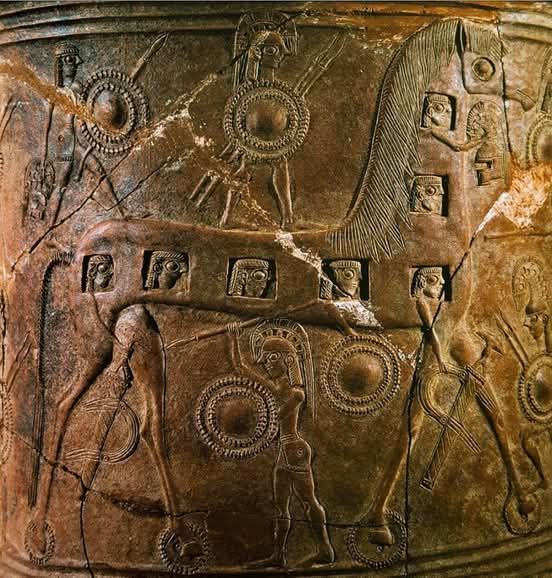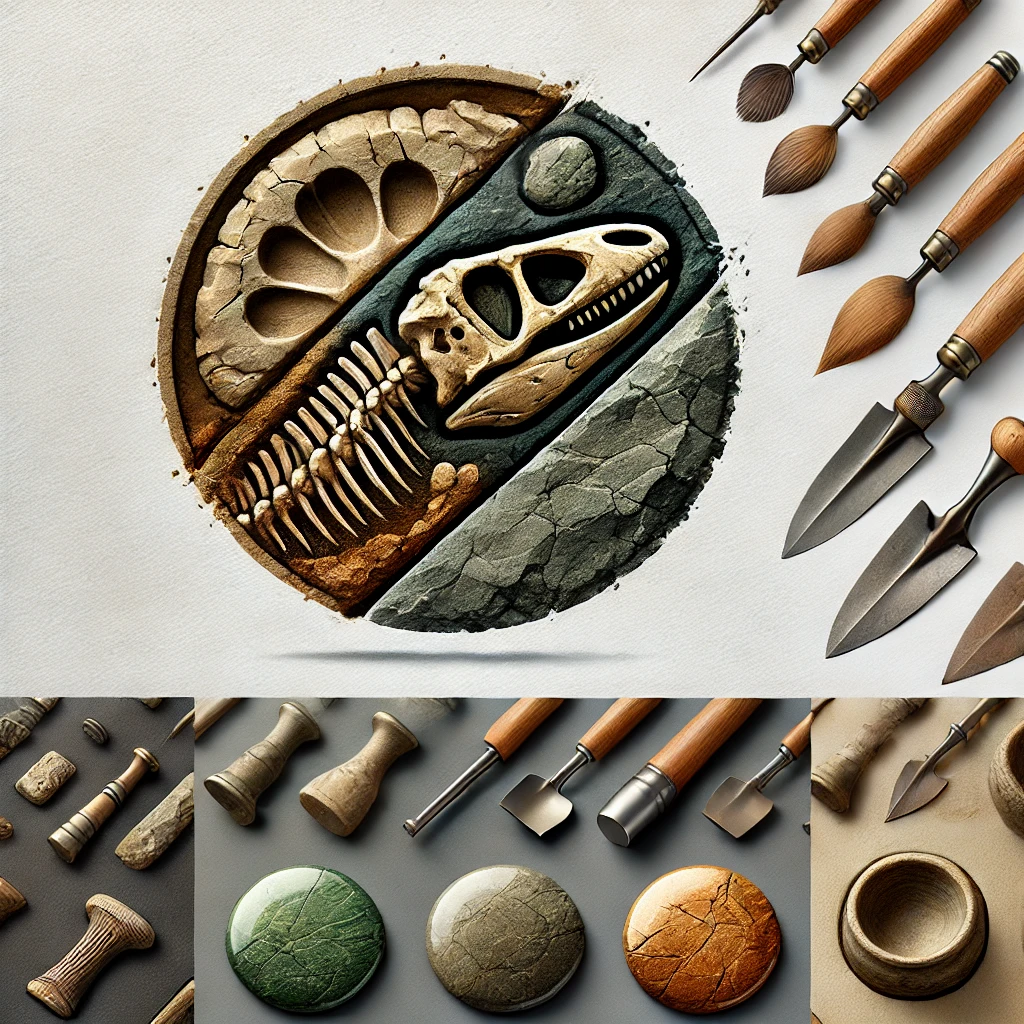The Mykonos Pithos: A Clay Vessel That Unlocked the Trojan Legend
In 1961, on the sunlit shores of Mykonos—a Greek island better known for its whitewashed houses and windmills—a simple act of drilling changed the course of archaeological history. Beneath layers of soil and centuries of dust, a ceramic jar lay hidden, undisturbed since the 7th century BC. But this was no ordinary storage jar. It would become one of the most remarkable archaeological discoveries ever made in the Aegean: the Mykonos Pithos, now recognized as the earliest visual representation of the Trojan Horse.
This ancient vessel, estimated to date back to around 675–650 BC, offers not only a rare glimpse into early Greek art, but also a powerful bridge between myth and material culture. What had long lived in the verses of Homer and the tragedies of Euripides was suddenly, strikingly tangible.
A Discovery Beneath the Earth of Mykonos
An Accidental Find Turns Into Archaeological Gold
The pithos was unearthed during a routine construction project involving a water well. When work halted to examine the large clay container, archaeologists from the Greek Antiquities Authority were called in. They quickly realized the significance of the object—not just due to its age, but because of the astonishing carved relief scenes wrapped around its body.
The Mykonos Pithos Today
Now carefully preserved and on display at the Archaeological Museum of Mykonos, this jar draws scholars, historians, and tourists alike. Standing before it is like gazing into a myth—one where heroes hide inside wooden monsters, cities burn, and legends are born.
The Trojan Horse in Clay: Art That Tells a Legend
The Story Etched in Terracotta
The relief on the Mykonos Pithos is a dramatic visual narrative. It shows Greek warriors—tiny but fierce—emerging from the belly of the Wooden Horse, swords drawn, ready to sack the unsuspecting city of Troy. The scene unfolds with almost cinematic clarity: flaming buildings, slain defenders, anguished women and children caught in the chaos.
This is not a symbolic or abstract representation. It is storytelling in high relief, carved meticulously into a utilitarian object. Its creators weren’t merely decorators; they were visual historians of myth.
Greek Mythology Comes Alive in 700 BC
Long before the sculpted friezes of the Parthenon, before the red-figure pottery of Classical Athens, the Mykonos Pithos was telling one of the greatest stories ever told—the fall of Troy. And it did so at a time when Homer’s Iliad and Odyssey were likely still being passed down orally.
The jar provides archaeological proof that the Trojan saga was already widely known and deeply embedded in Greek cultural consciousness by the 7th century BC.
The Role of the Trojan Horse in Greek Imagination
Though Homer’s Iliad ends before the Horse’s famous ruse, later poets and playwrights like Virgil, Euripides, and Sophocles expanded on the tale. The Mykonos Pithos predates them all, showing that the image of the Wooden Horse—deceptive, hollow, divine—was already an enduring part of Greece’s mythological tapestry.
Symbolism and Suffering: A Vessel of War and Memory
Civilians in Conflict: The Suffering of Women and Children
What’s striking about the Mykonos Pithos is not only its heroic imagery but also its brutal honesty. Unlike idealized depictions of war, the pithos does not shy away from the horrors of conquest. In one panel, women are shown being led away, faces etched in anguish. In another, children cling to fallen mothers. These motifs bear a haunting resemblance to Euripides’ “The Trojan Women”, which mourns the suffering of Troy’s survivors.
It is this emotional realism that elevates the jar from object to artifact of collective memory.
The Pithos as More Than a Storage Jar
Traditionally, a pithos was a large ceramic container used for storing grain, oil, or wine. But this one is different. Its size (over 1.3 meters tall) and intricate carvings suggest it had ritual or commemorative purposes. Some scholars even believe it might have served as a funerary marker for a warrior or aristocrat—a clay tomb that told the tale of heroism and loss.
A Bridge Between Archaeology and Myth
The Mykonos Pithos doesn’t merely reference mythology—it visualizes it. It acts as a bridge between archaeological evidence and legendary tradition, providing one of the earliest material proofs that myths like the Trojan Horse were deeply woven into daily life and belief systems in ancient Greece.
What the Mykonos Pithos Tells Us About Ancient Greece
Early Greek Artistry and Storytelling
Dating from the Orientalizing period of Greek art (circa 700–600 BC), the Mykonos Pithos showcases the early Greek shift from geometric decoration to narrative relief. Influences from the Near East are evident, yet the themes are distinctly Hellenic. Its detail, emotion, and complexity foreshadow the classical art of later centuries.
The Cultural Memory of Troy
Whether or not Troy fell to Greek trickery, the myth held a central place in Hellenic identity. By the time the pithos was created, the Trojan cycle had become a cultural touchstone—one used to define ideals of heroism, cunning, sacrifice, and fate.
Mykonos and the Homeric Legacy
Though not a central player in Homeric texts, Mykonos’ role as the findspot of this jar has forever linked it to the epic world of Troy and the Achaeans. It reminds us that the impact of Homer’s legacy—and the myths of the Trojan War—extended across the entire Greek world, from Ionia to the islands.
Why the Mykonos Pithos Still Matters Today
A Rare Synthesis of Art, History, and Myth
The Mykonos Pithos is a unique artifact—not because it tells us the facts of the Trojan War, but because it reveals how ancient people understood and visualized their myths. It brings us into their world, showing us what they valued, feared, and remembered.
Lessons From the Past: War, Deceit, and Human Cost
In an era still marked by warfare and displacement, the pithos serves as a somber reminder of the human cost of conflict. Like the tragedies it anticipates, it doesn’t glorify war—it mourns it.
Preserving the Memory
Thanks to careful conservation efforts, the pithos remains intact—a clay witness to one of history’s most enduring legends. And as thousands of visitors gaze upon its surface each year, they are reminded of the timeless power of art to preserve memory, and the equally timeless nature of myth.
A Legend Etched in Clay
The Mykonos Pithos is more than a beautiful artifact. It is a narrative in terracotta, a myth frozen in time. It connects us to the distant past—not just through words, but through images that speak across millennia. In a single jar, it holds war and poetry, suffering and glory, art and archaeology. And perhaps most importantly, it offers proof that even in the ancient world, stories were meant to endure.

CÁC TIN KHÁC
Mary Walton: The Forgotten Inventor Who Helped Clean Up America’s Cities
Tomb of Queen Nefertari in the Valley of the Queens, Egypt
Discover the Hypostyle Hall of the Temple of Hathor at Dendera
Venus de Losange: Unveiling the Mystery of a 20,000-Year-Old Paleolithic Icon